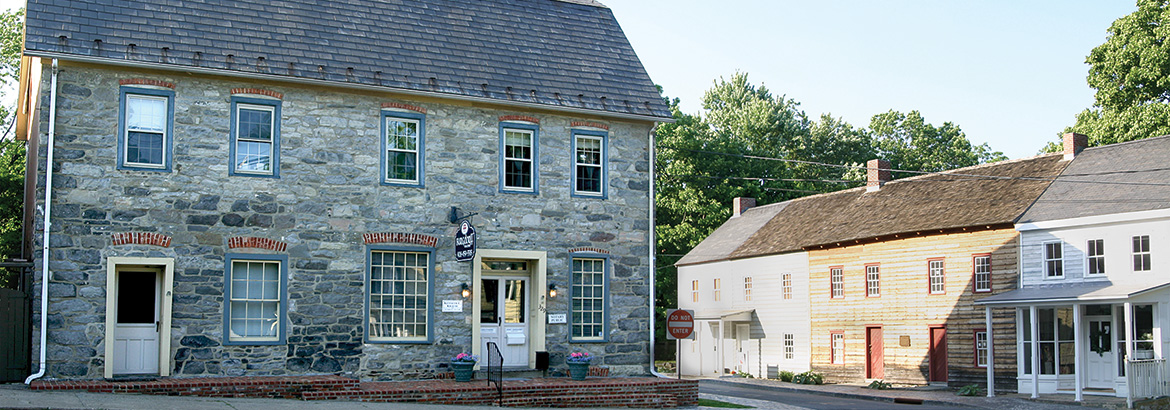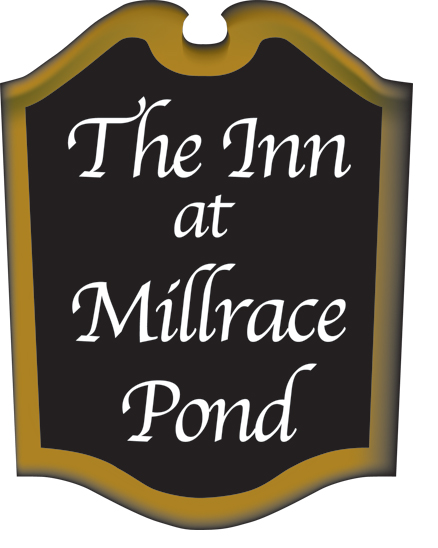History of Hope, NJ

Hope is one of the earliest planned communities in America, having been established by German Moravians in 1769.
A short ride through the Village of Hope immediately shows visitors and residents that the community developed quite differently from most nearby towns in the mid 1700s. This is because Hope is one of the earliest planned communities in the country, having been established by German Moravians in 1769. They knew what they wanted to achieve, which is shown on several early planning maps which details streets, homes, wells, businesses, farms, a school, tavern and church.
Prior to the arrival of the Moravians, there was no distinct town, but several families farmed on Jenny Jump Mountain, to the south of Hope, in surrounding acreage and on John Samuel Green, Jr.'s farm in the center of what is now the Village. Throughout the 1760's, Moravians from Bethlehem, Pennsylvania traveled through this area on their way to New England to establish new communities. They lodged overnight with the Green Family who became very impressed with their religion and way of life.
The Moravians were a religious group whose formal name was the "Unitas Fratrum" or Unity of the Brethren. They were followers of John Hus, the reformer from Prague who protested against the Catholic Church in 1415 and was finally burned at the stake for his rebellion. These followers continued to practice his views in Moravia and Bohemia in what is now the Czech Republic, hence the common name "The Moravians". In the late 1600's this group began to be persecuted and sought shelter away from Bohemia. Count Nicholas von Zinzendorf offered his lands near Dresden, Germany and provided a base for them to regroup and pursue their religion. That settlement which remains as the center of the worldwide Moravian religion is called "Herrnhut" or "The Lord Watches Over Us". With the support of Count von Zinzendorf, the Church established over 200 missionary settlements worldwide, sailing to the Savannah, Georgia area in America in 1735.
After 5 difficult years there, they moved north to Bethlehem, Pennsylvania to establish it as their center in North America. About 15 years later, following this successful move to Pennsylvania, they again traveled to the south as well as to the north via Hope Township thereby meeting the Green Family.
After several years of getting to know the Moravians very well, Mr. Green offered them 1,000 acres of his land to establish a settlement on his farm. The primary factor which brought them to the decision to settle in Hope was the source of water power from Beaver Brook, which they judged would provide them with several sources of income to support the new village. The Moravians pursued industrial skills and crafts rather than solely farming and believed the area would grow with surrounding farms and residents who would need to purchase goods produced in Hope.
The Moravians did not accept the land as a gift; however purchased it with 1,000 British pounds and later added another 500 acres to the village, Immediately, Peter Worbass, formerly Manager of the Sun Inn Tavern in Bethlehem came to Hope as the first Farm Manager or Administrator of the community.
Recognizing the need for immediate income to develop the Community, the first industrial building built was the Grist Mill and its Millrace, which diverted a channel of water to the Mill to run the grinding wheels to grind flour. This was accomplished in one year and began immediate production, which continued into the 1950's. This industry was soon followed by the Distillery, General Store, Log Tavern, a Saw Mill, Oil Mill, Pottery, Tannery, Log Cabins, North and South Farms, permanent limestone residences, Single Sister's Residence and School.
After a formal survey of the Village completed on November 26, 1774, the community was officially accepted by The Moravian Church and the name was changed by drawing lots on February 8, 1775 from Greenland to Hope.
Moravians who believed in the Bible, rather than the infallibility of the Catholic Pope, felt strongly about education for boys and girls, an unusual goal in the late 1700's, and were superb musicians, with brass choirs and organ music accompanying church services, concerts and all manner of community occasions. The community at Hope was governed by elder men and women who made decisions regarding professions for young people, marriages, development of the community regarding businesses, new homes, etc, as well as guided the religious life of the group. In the Gemeinhaus, meetings were held daily and on Sunday morning the litany was read.
After almost 40 years of the Moravian "experiment" in Hope, the community was sold and almost all of the Moravians returned to Bethlehem or Nazareth, Pennsylvania. The basic reason for closing the community was that it was never self-supporting and had declined from its height of population of 147 to under 100 people by the early 1800's. The Church in Germany could no longer subsidize such a small village. Moravians world wide were selling possessions and even some other entire communities to pay off debts incurred years earlier by Count von Zinzendorf who heavily mortgaged his lands to give them opportunity back in Germany. Disease and a competitive gristmill also contributed to Moravian Hope's decline.
The congregation's last act was the service of worship in the Gemeinhaus on Easter Sunday, April 17, 1808.
The entire Village was sold for $48,000 to Nicholas Kramer and Abraham Horn of Northampton County, Pennsylvania. This included the 1,500 acres and about 16 buildings. They kept certain businesses functioning and gradually sold off the carefully defined lots and buildings purchased from the Moravians.
In the late 1700's another area of the Township was developing, which was Mt. Hermon, Originally named Green's Chapel, John Honeywell left nearly all his estate for the education of the children in the neighborhood of Knowlton. Honeywell Academy was established and the school building built in 1798 and then later, in 1834 the Headmaster's House was built. The Mt. Hermon Methodist Church was built in 1811 with numerous residences built in immediate area through the late 1800's.
After the Moravians, Hope Village experienced two major periods of growth, as can be seen by the development up High Street to the West and the building of several major sites throughout the middle 1800's with the 1850 census listing 145 farms, population 1756, 490 horses and 776 cows.
Four developments in the early 1800's assured that Hope Village would remain undisturbed from its original Moravian origins. In 1825 Belvidere was voted to become the County Seat rather than Hope, which was one of the three candidates. Also, immediate transportation opportunities passed by the village center with railroads built to the north and south of Hope and the Morris Canal running to the south.
Through 1870-1880, growth in the Village occurred again with more residences being built and the establishment of several general stores, physicians, and other services in the busy town center. Many retired farmers who passed the farms on to the next generation moved into town.
An area of the Township, which significantly developed in the early 1900's, was Silver Lake. Prior to that there were a few old homes in the area, with some farms and meadow land. With the establishment of the Moravian Church Camp on Little Silver Lake and the Cranford Boys Camp on Silver Lake, fishing, swimming and picnicking became very popular. Lots were sold to establish numerous summer cottages.
The Village population was approximately 400 people in 1918, when a major fire destroyed several blocks in the village. With the loss of buildings at the Northern end of Route 519, the opening of Route 521 toward Blairstown created the intersection of the two country roads. Since then, there has been little change in the structure of the village.
The Village was entered into the State and National Registers of Historic Places, 1973.
Written By Mio French, H.O.P. E.


